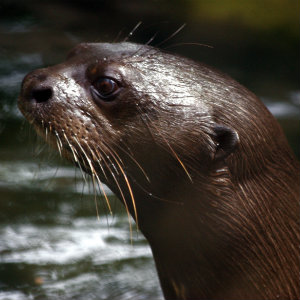GIANT RIVER OTTER

Nicole Duplaix
Latin name: Pteronura brasiliensis
In 1976, the giant otter was headed for extinction due to the fur trade in South America and we knew nothing about it. I was the first to study it in the wild and promote its conservation. It was soon protected from the fur trade in the countries where it occurred and started to make a slow comeback. Although still endangered in many areas, this charismatic social species can now be enjoyed seen by ecotourists in Peru and Brazil. - Nicole Duplaix
More information: www.iucnosg.org
Did you know? The Giant River Otter can grow to be over 5 feet long.
Publications:
Duplaix, N, E. Evangelista, F. Rosas (2015) Advances in the study of Giant otter (Pteronura brasiliensis), ecology, behavior, and conservation: a review. The Latin America Journal of Aquatic Mammals, Vol. 10, No.2:75-98
Groenendijk J., N. Duplaix (2015) Giant Otter Bibliography. IUCN-SSC Otter Specialist Group Bulletin 32(A):1-50
Groenendijk, J., F. Hajek, N. Duplaix, et al., (2005) Surveying and Monitoring Distribution and Population Trends of the Giant Otter Pteronura brasiliensis – Guidelines for a Standardization of Survey Methods. Habitat, 12, 120 pp.
Oceanic Society Guyana Giant Otter Project, Research Results: 2002-2004
Giant otter Final Report. WWF-Guianas Rapid River Bio-assessments and Giant Otter Conservation Project - FG-40 FY2002. 2003. 185 pp.
Duplaix, N. Observations on the ecology and behavior of the Giant River Otter Pteronura brasiliensis in Suriname. Terre et Vie. 34:495-620. 1980
